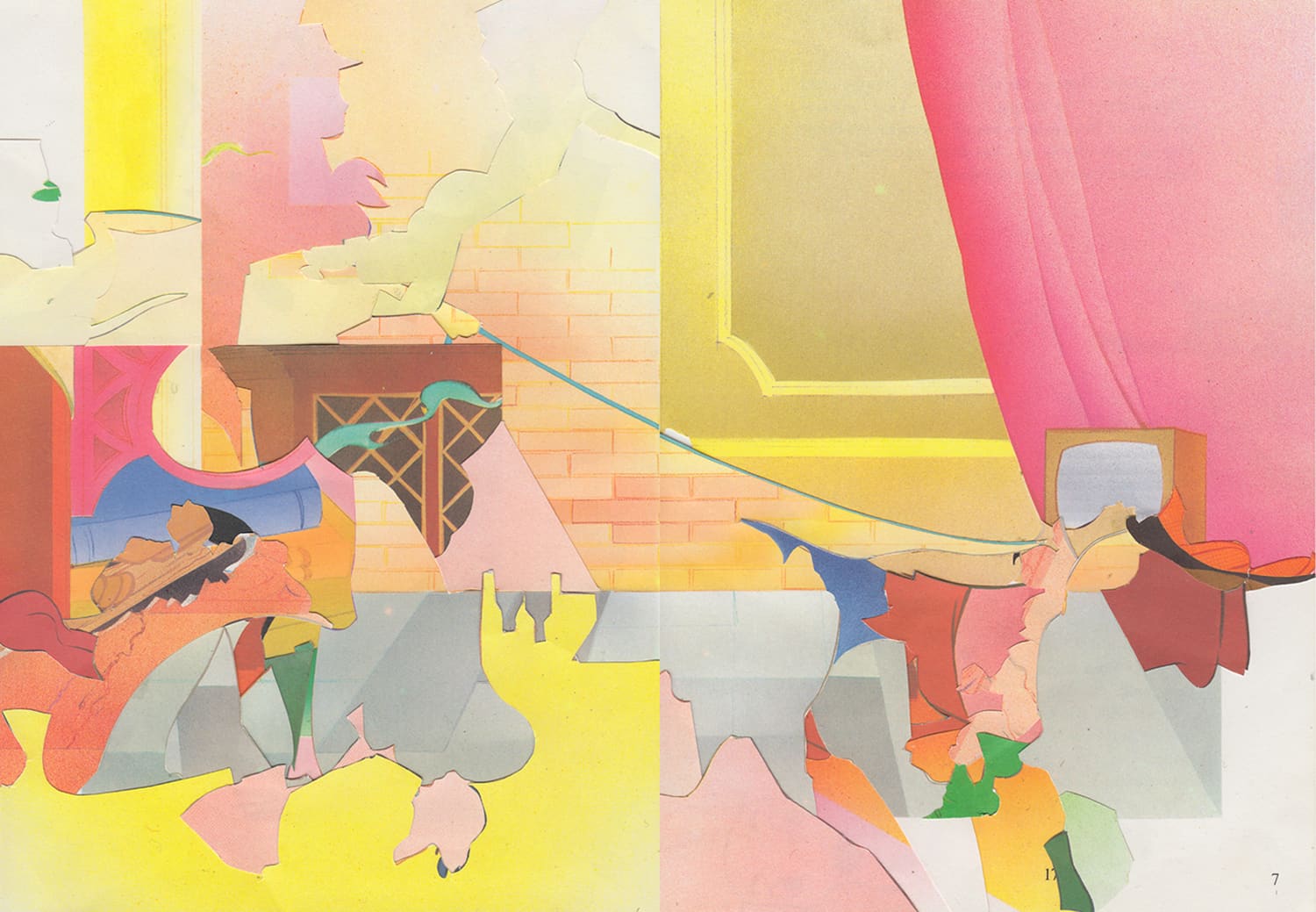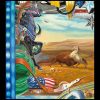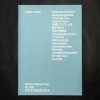Text by Paul Henderson.
I don’t actually consider most of what I do with collage and found images appropriation. To me, there is a difference between incorporating Mickey Mouse’s eyeball in a collage and using a wholly recognizable image of Mickey Mouse. In the first instance, the eye is a sign for eye, it may produce an echo of its cartoon origin, even a Disney ‘feeling,’ but it’s detached from the character and specifics of Mickey himself. On the other hand, if an artist is using the face of Mickey Mouse or Colonel Sanders, those characters and brands take on a distinct symbology, they’re loaded with meaning, and the work, no matter what, becomes about them and the new context in which they’re placed. What we know of Mickey travels into the new artwork, even if something new is created in doing so. This is how I think of appropriation, but I don’t think this is how I work or how my pictures work.
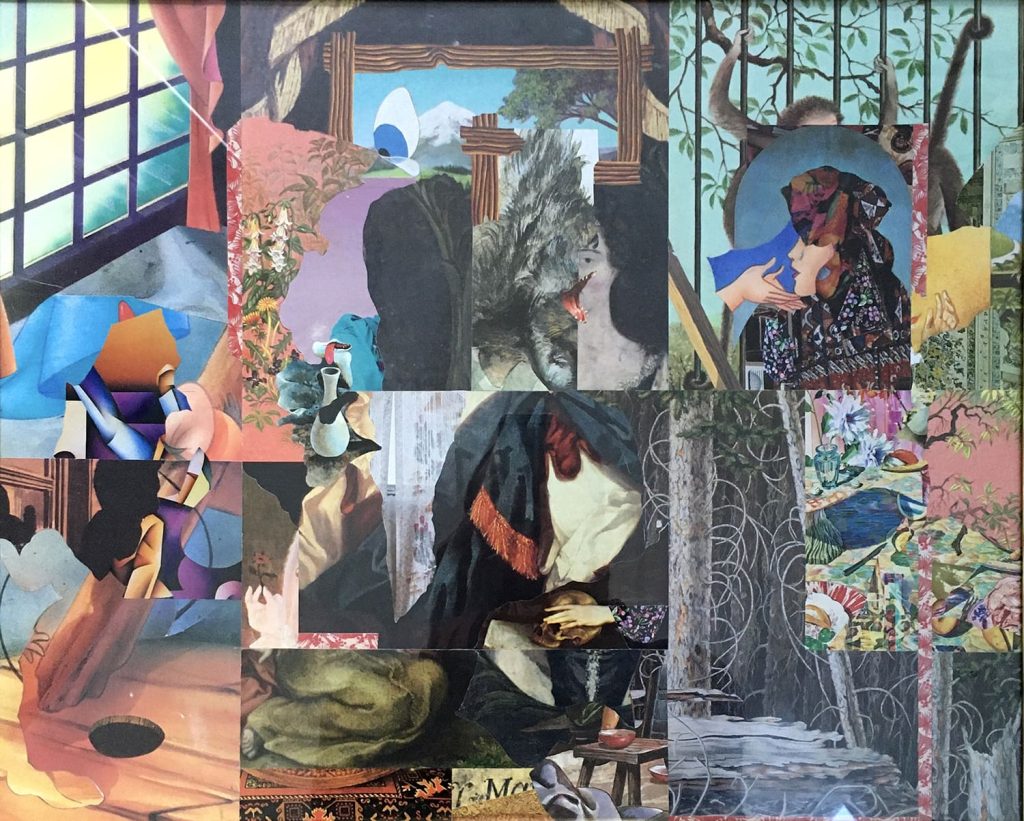
I approach source material primarily as a form of resource extraction. It’s all just (not quite) raw material. I’m interested in the material either formally, be that texture, colour, line, shape, pattern or what the fragment represents (a cup, ladder, chain, eye, hammer, hand etc.). I’m not particularly interested that the hand is Archie’s, the cup Pinocchio’s, or that Tom bludgeoned Jerry’s head with the hammer. Of course, the material is never completely separated from its origin, it has unique, inherent qualities and style that are evocative, but they lack specificity, and are therefore relatively free and versatile (or ambiguous), once sheared from their original context.
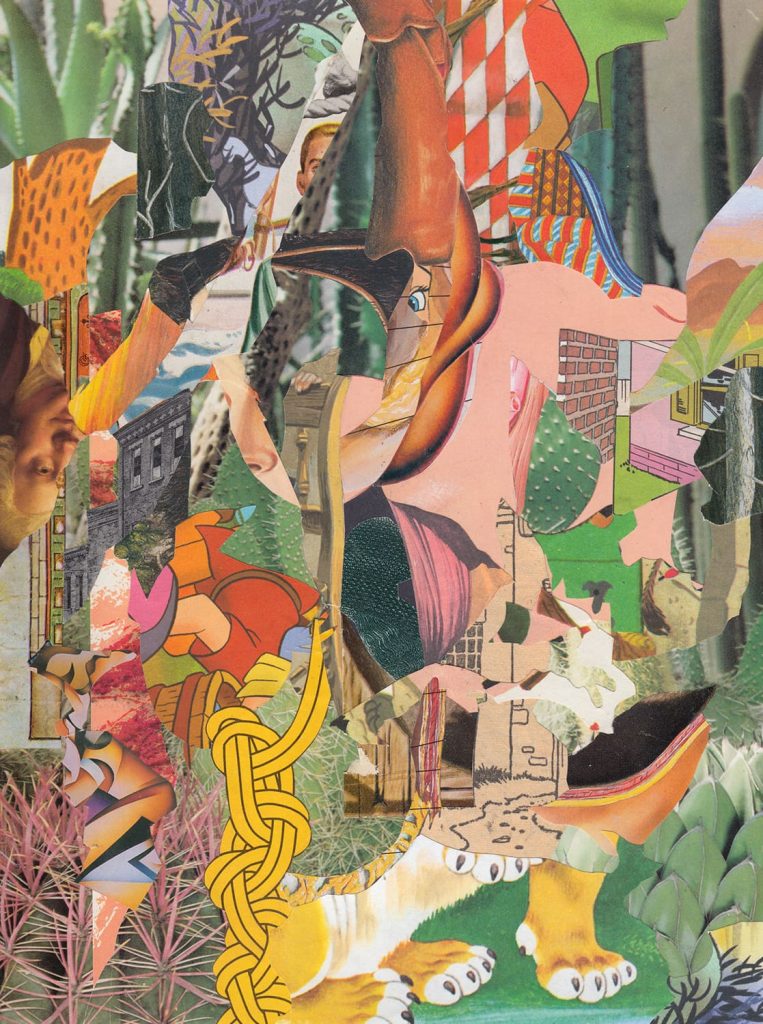
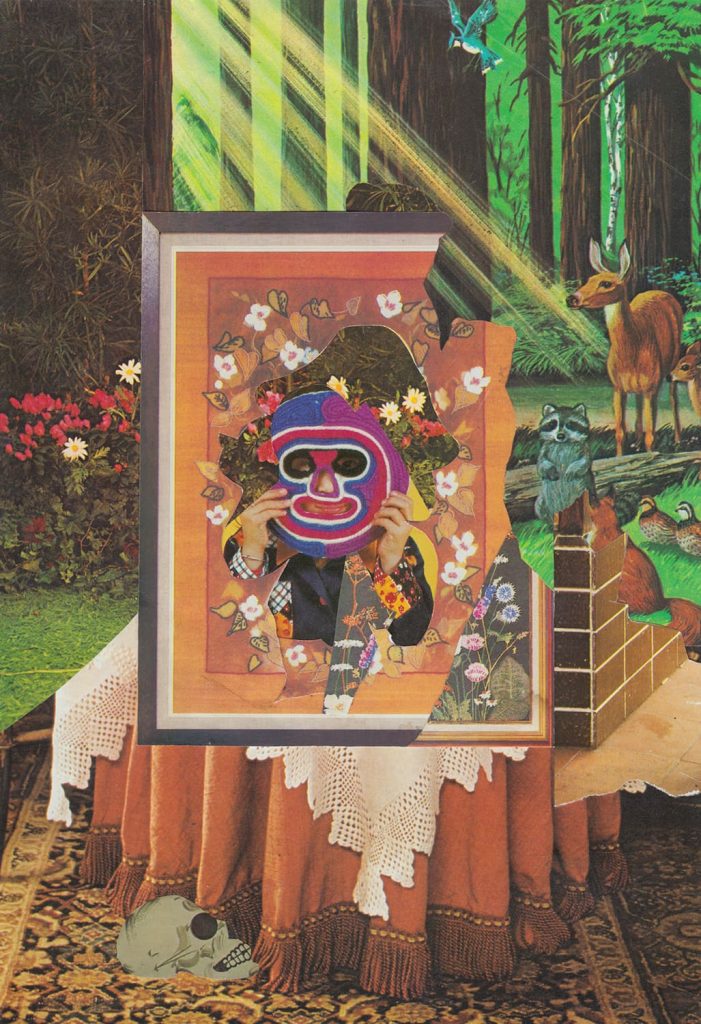
The closest my work has come to true appropriation (at least how I see it) is in the Heroes & Leaders body of work where I’m using images of 18th and 19th century portrait paintings pulled from art history books as the ground for new collages. But even in this work, I’m not all that concerned about the specifics of the painting or who painted it, or who was painted. I am interested in this visual history and what kinds of people traditionally have their heroic portrait painted, but I’m not using this material to comment specifically on Sir So-and-So or Lord Muckety-Muck, or the artist on which the King bestowed the commission. New meaning is generated by repurposing and combining materials and by the viewer, but it isn’t dependent on identifying the original painting. This isn’t Robert Rauschenberg’s Erased de Kooning or Marcel Duchamp’s LHOOQ, two definitive works of appropriation art. In my work the images still read as reproductions of ‘paintings’, but they’ve had their distinguishing features significantly modified through collage (the fingerprints have been removed!). Hopefully those modifications, the sum of the parts, add up to something intriguing or even worthwhile.
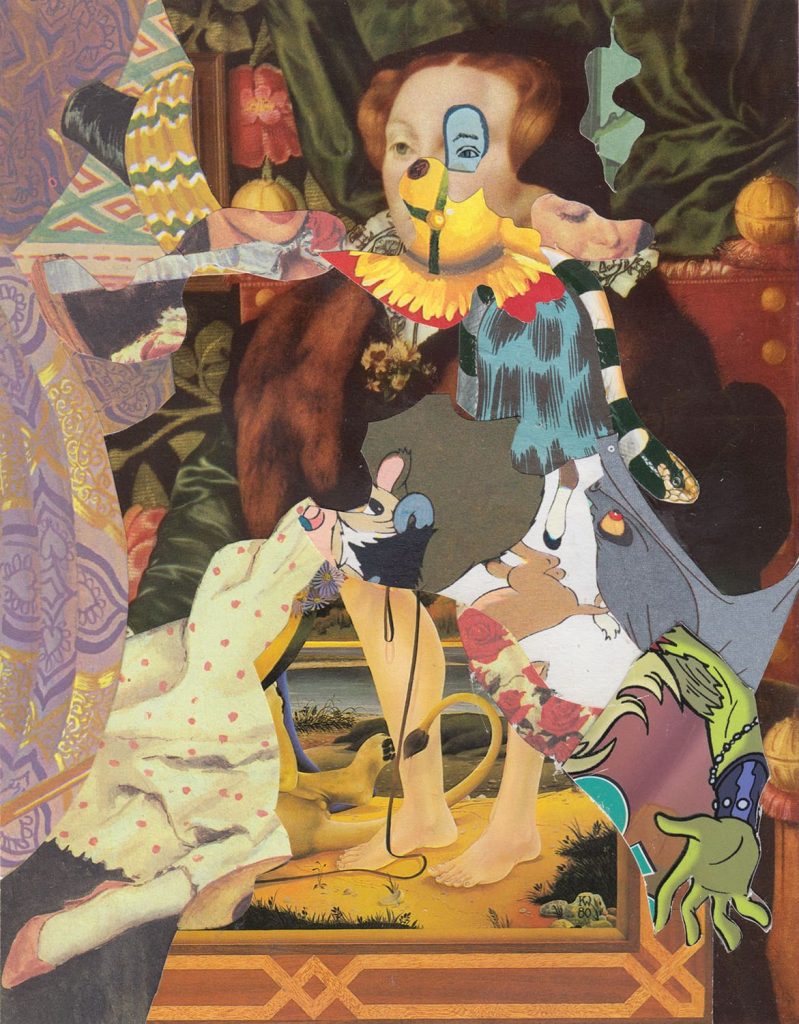
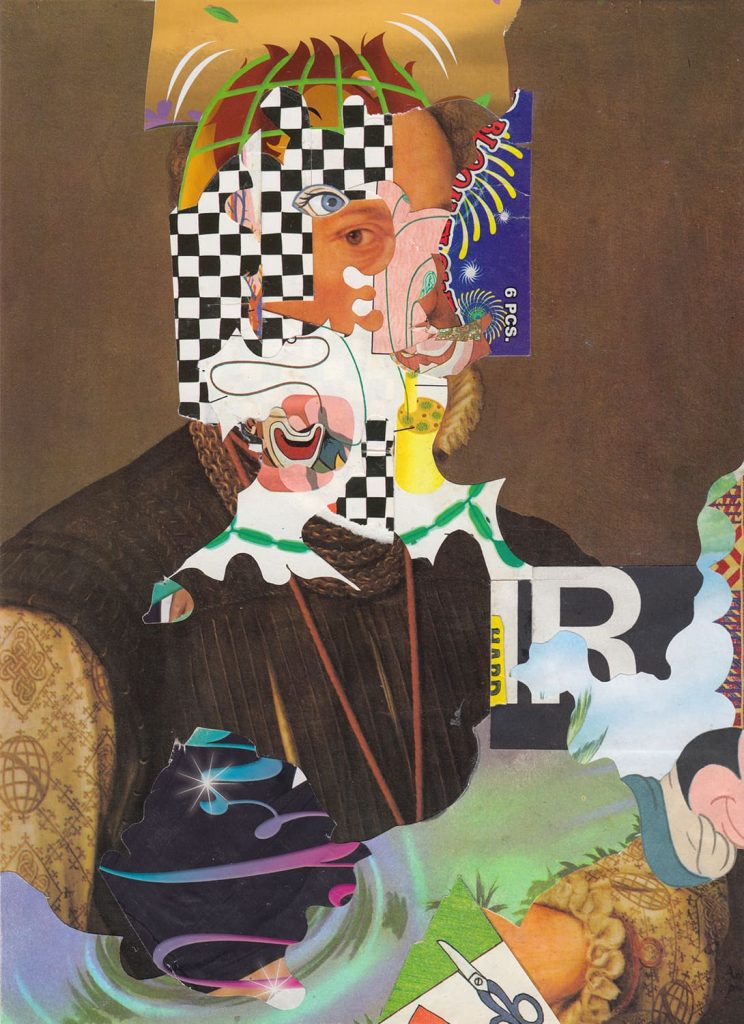
Collage is a means to an end for me. It is the best way I know how to make pictures that fascinate me and compel me to keep making. My curiosity drives the combination (and accumulation) of source material and how these disparate image elements can work together to create a new and cohesive whole. I collect a lot of material, mostly heavily illustrated publications, children’s books and otherwise. I initially came to illustrated material as a way to challenge myself. I hadn’t seen a lot of work that used it extensively and I was quite repulsed by the bright colours and gradients (especially in the Disney books). But the more I cut them up, the more intrigued I became with the strange shapes, lines, and dynamic colour. At first, I’d use a single source and make a few works from one particular book before moving on to a new publication. Eventually, the range of scraps on my desk became more interesting and irresistible and I started making pieces that combined an array of source material into a single picture. I was able to create harmony through a multitude of contrasts.
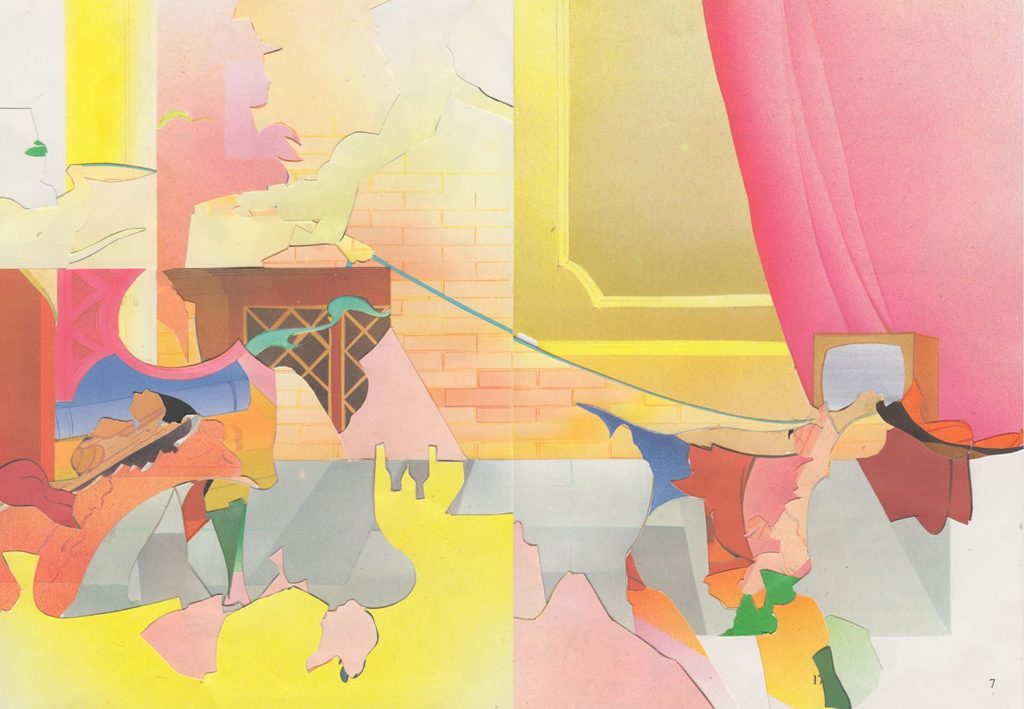
My process remains quite dependent on chance, on happy accidents, offcuts and the unintentional. I really love the way the range of illustrated fragments can fuse together, through smooth transition or bold juxtaposition. I feel like I’m on to something, that I’m developing a unique visual language, and the potentials are endless.
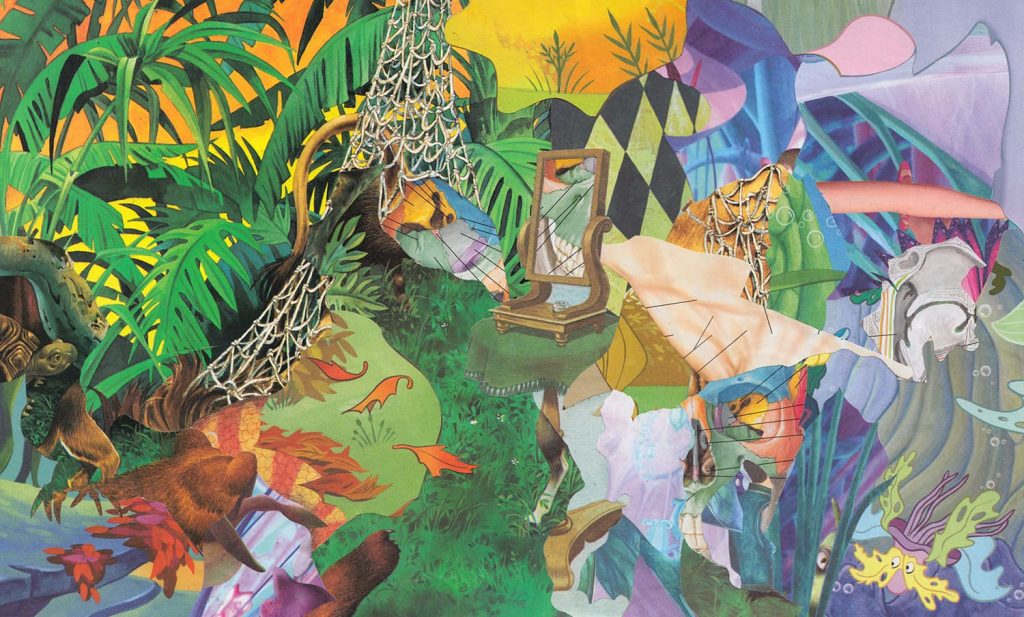
Paul Henderson is an artist and arts worker based in Sackville, New Brunswick, a small university town on the East coast of Canada. Primarily working in collage, his award-winning work has been exhibited across Canada, and internationally. A frequent collaborator with the independent music community, his work has been featured on numerous album covers, posters, and videos.
Learn more about Paul on his Instagram or Website

